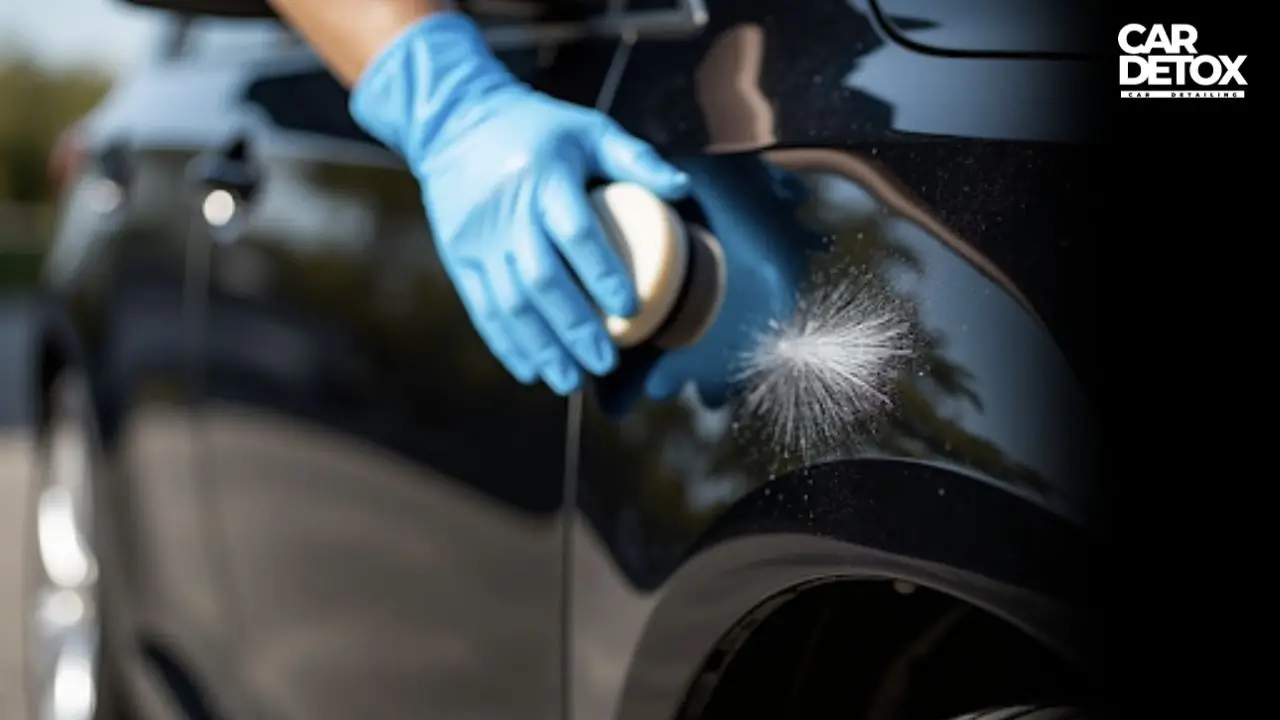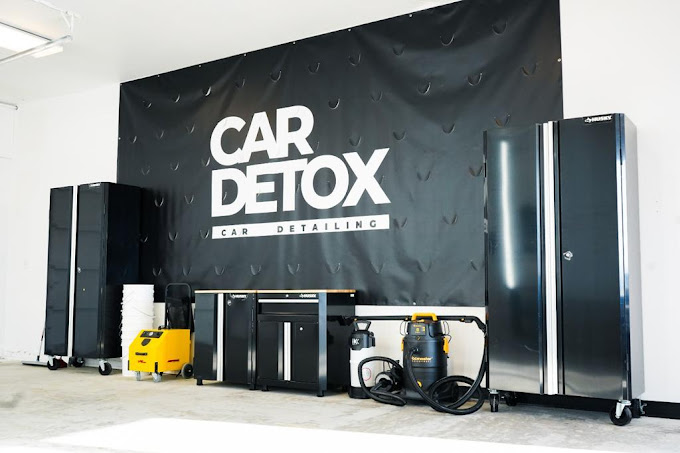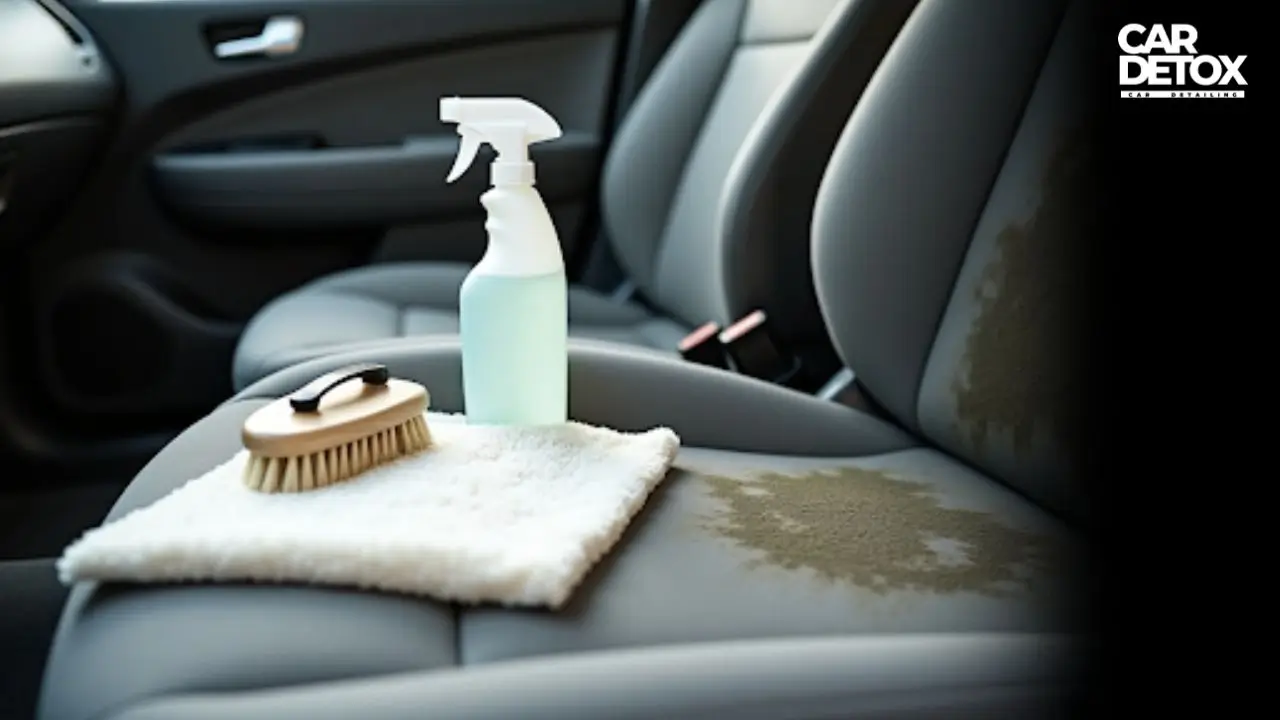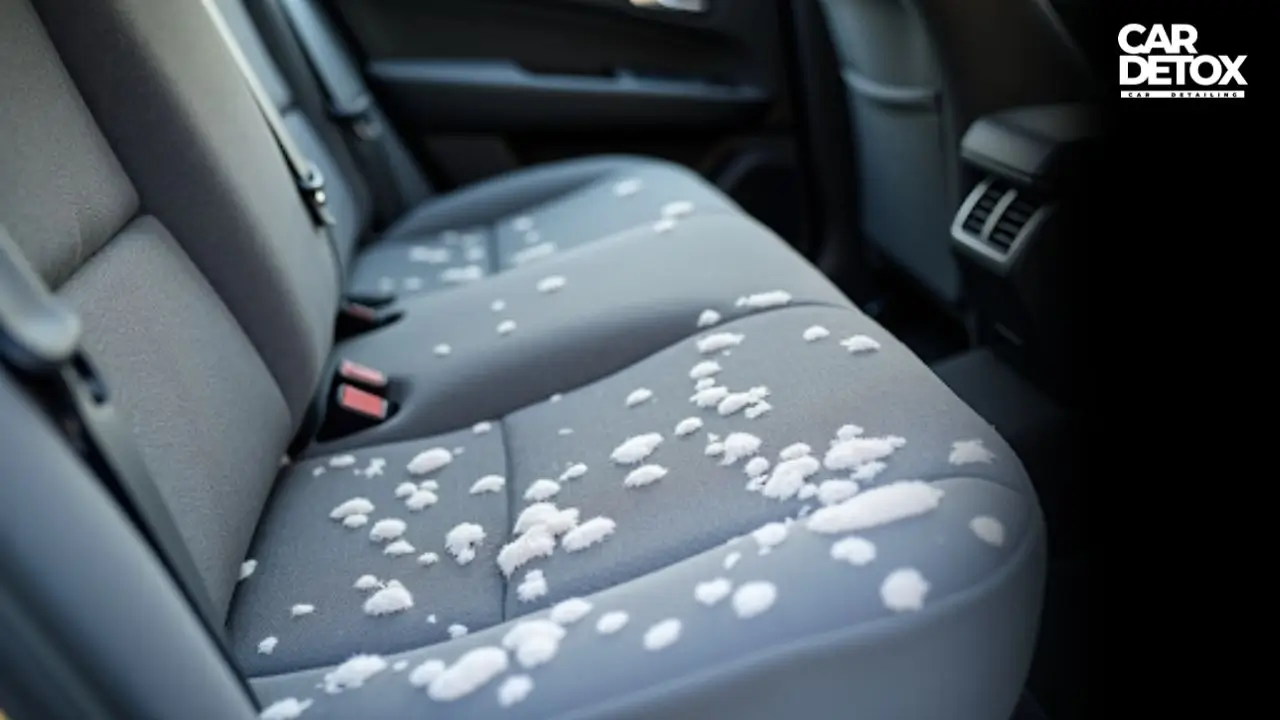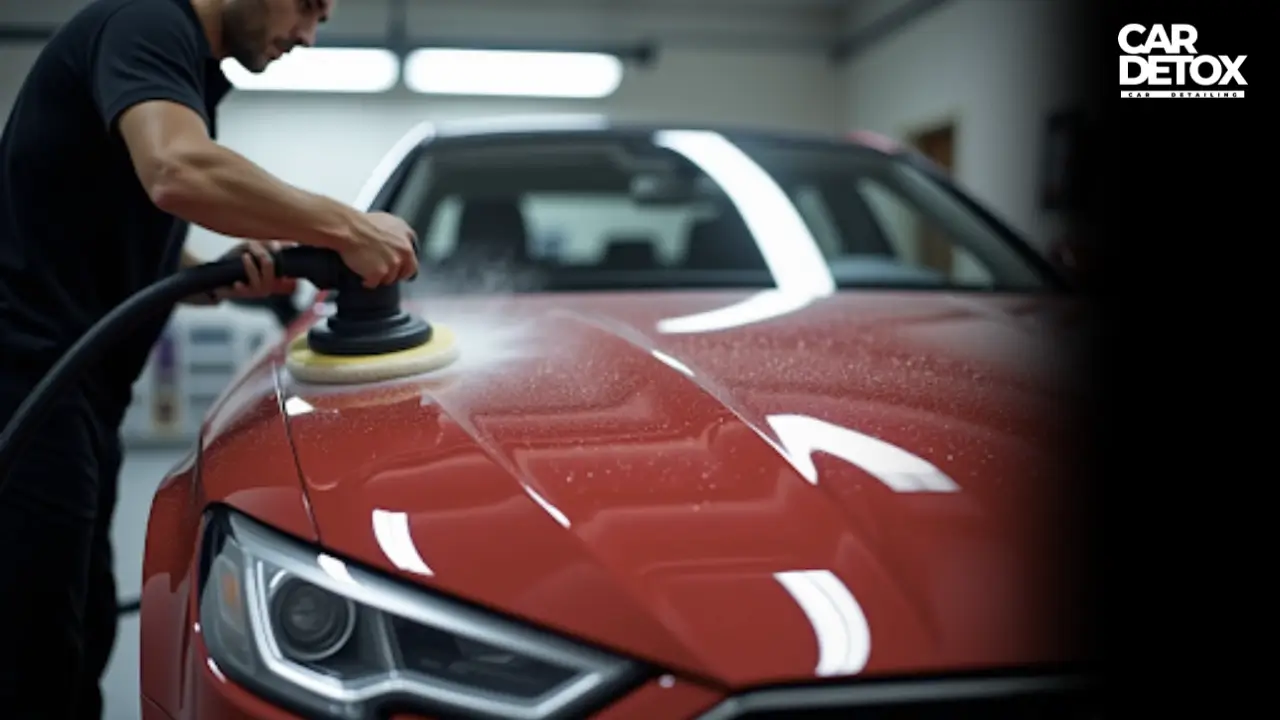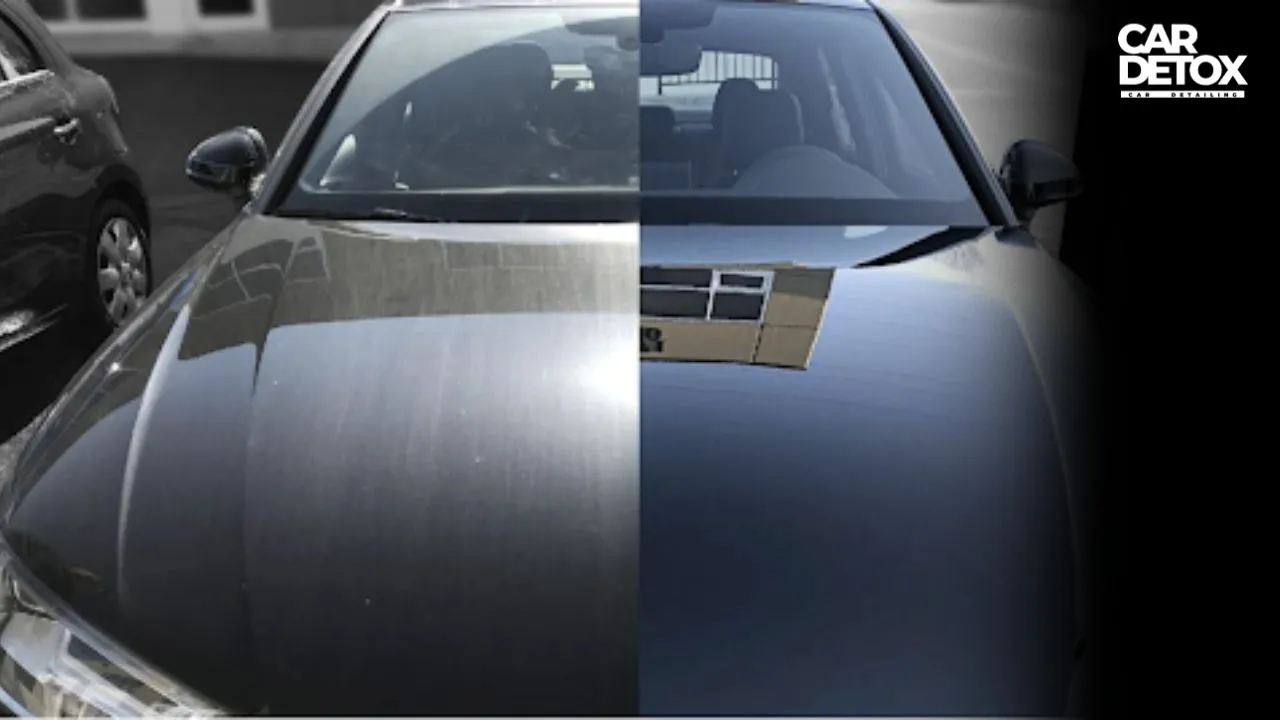That annoying car scratch catches your eye every time you walk by, doesn't it? Learning how to polish out scratches on a car goes beyond just looks - it's a vital step to protect your vehicle's value.
Your car's resale value drops a lot when even a small scratch exposes the paint or metal to weather damage. The right tools and techniques to restore your car's perfect finish depend on whether the scratch affects the clear coat, paint, or primer. You can fix car scratches at home with simple solutions like polishing compound or touch-up paint.
We'll show you two methods that repair 99% of car scratches. You'll even learn to turn a cordless drill into a mini buffing machine. Our proven DIY solutions work on everything from shallow clear coat scratches to deeper marks that expose the primer. From light swirls to deep scratches—Car Detox has the tools and expertise to restore your car’s flawless finish
Understand What Caused the Scratch
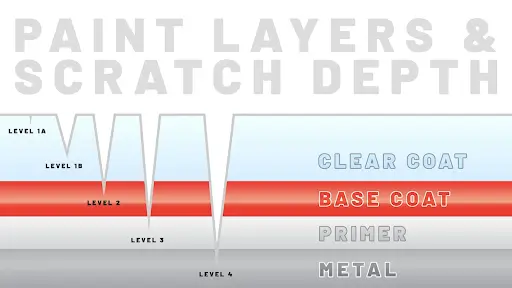
A car scratch needs proper diagnosis and understanding before any repair work begins. Each scratch has its own story and needs a specific fix.
Common causes of car scratches
Your car faces risks every day from many sources. Here's what typically causes those annoying scratches:
- Improper washing techniques: Dirty sponges, rough brushes, or poorly managed automatic car washes can trap dirt that scratches your paint
- Road debris and gravel: Other vehicles kick up rocks and pebbles that chip the paint on your bumper, hood, and roof
- Accidental contact: Missing the keyhole, scratching with jewelry or zippers, or shopping carts bumping into your vehicle
- Tree branches and foliage: Trees with overhanging branches can scratch your car, especially on windy days
- Tight parking spaces: Door dings happen often in crowded parking lots and are a common source of scratches
- Vandalism: Intentional damage, like keying, leaves the deepest and most severe scratches
How to assess scratch depth
Cars today have three paint layers: clear coat on top, base/color coat in the middle, and primer at the bottom. These layers protect the metal body. The affected layer determines the best repair method.
The fingernail test is the quickest way to check. Run your nail across the scratch gently. A scratch that doesn't catch your nail usually affects just the clear coat, and polishing can fix it. If your nail catches a bit, the scratch has gone deeper into the paint. White, gray, or primer-colored scratches mean damage through both clear coat and paint layers, which requires more extensive repairs.
Water can tell you a lot, too. Spray some on the scratch. A scratch that disappears when wet is usually shallow enough to polish out.
Why quick repair matters
Scratch repairs aren't just about looks. Small scratches can turn into big problems if you ignore them. Scratches that reach the metal let air, water, and contaminants start rusting, which spreads fast and can weaken your car's structure.
Unrepaired scratches also hurt your car's resale value. Buyers look closely at the car's condition, and visible scratches make a bad impression. A simple scratch repair can turn into a full panel repaint if you wait too long, and that costs much more money.
Choose the Right Repair Method
The right repair method becomes significant once you spot how deep your scratch goes. Each type of scratch needs its own fix, and the wrong approach could make things worse.
Buffing out light scratches
Light scratches that don't catch your fingernail need buffing. These surface marks stay above the paint's protective layer, and you can fix them easily. Clean the area first to stop dirt from creating more scratches during repair.
Take a clean microfiber towel with liquid scratch remover or rubbing compound and work on the scratched area in circles for about 60 seconds. Remember to keep the pressure light - you want to remove just enough clear coat to blend the scratch naturally. A quality car polish will help restore the shine perfectly.
Using touch-up paint for deeper marks
Touch-up paint becomes necessary when your fingernail catches the scratch. These deeper marks go past the clear coat into the color layer and need extra care.
The scratched area needs to be clean and dry. Find touch-up paint that matches your car's exact color code. Apply thin layers with a fine brush or pen applicator and let each coat dry for 15-20 minutes. Two or three thin coats should do the job. Sand it gently with 2000-grit paper, then buff and polish to blend it smoothly.
Filling with clear coat for deep scratches
Deep scratches that show metal underneath need quick attention to stop rust. These scratches call for a step-by-step fix.
Clean the area and remove any rust first. Start with 800-grit sandpaper and work your way up to 2000-grit. Metal exposure means you need primer before adding color-matched paint in thin layers. Let the paint dry completely. Add two wet coats of clear coat, 10-20 minutes apart. The clear coat needs at least 24 hours to dry before any buffing or polishing starts. Don’t let scratches steal your shine! Let Car Detox professionally correct your paint and bring back that smooth, glossy look.
DIY Scratch Removal Techniques That Work
You can fix car scratches at home with the right knowledge and tools without paying for professional help. Let's take a closer look at techniques that really work.
How to fix car scratches with sanding and polishing
Start by collecting your supplies: sandpaper (1500-3000 grit), water spray bottle, polishing compound, and microfiber cloths. Clean the scratch area really well and spray plenty of water to wet the sand properly. A sanding block wrapped with sandpaper helps maintain even pressure as you work horizontally across the scratch—never along its length. Let the sandpaper do the work and avoid pressing too hard. The scratch should disappear when wet before you switch to finer grit sandpaper (3000+). This removes any leftover sanding marks.
Using a drill as a buffer
A cordless drill works great as a mini polisher. You'll need a velcro backing plate that fits polishing pads for your drill. Your drill speed must stay low (under 2000 RPM) to prevent paint damage from excess heat. The drill's position makes it hard to keep steady pressure. Practice helps you keep the pad flat against the surface and avoid creating swirl marks.
How to remove deep scratches from a car safely
Deep scratches that reach the primer or metal need special care. Clean and sand the area with progressively finer grits (220 through 3000). Metal exposure requires primer before you apply color-matched touch-up paint with a fine brush or toothpick. Each thin layer needs 15-20 minutes to dry completely. A clear coat provides protection and gives your repair a professional look. These methods can make nasty scratches almost invisible when done right.
When to Call a Professional
DIY repairs can fix many car scratches. You need to know when to get professional help to save time and avoid making things worse.
Signs a scratch is too deep to fix at home.
The "fingernail test" gives you a quick way to check - if your nail catches in the scratch, you probably can't fix it with simple polishing. On top of that, you can try the water test. If water spray doesn't make the scratch temporarily vanish, you'll need professional help.
Scratches that show primer or bare metal go through multiple paint layers. These need expertise beyond what most DIY kits can handle. Primer scratches need immediate attention because exposed metal rusts quickly. Trying complex repairs without the right tools often makes the damage worse, and professional fixes end up being more economical.
Cost vs benefit of professional car scratch repair
Professional repairs might cost more upfront than DIY fixes, but they give you better value over time. When scratches aren't fixed properly, you'll need a professional to correct them later. This doubles your costs.
Luxury and high-value vehicles need professional repair to keep their resale value. Untreated scratches let moisture and dirt get in. This can lead to structural problems. Rust forming under scratches can hurt your vehicle's integrity. What looks like surface damage can turn into a major issue.
How to prevent scratches after repair
Your newly repaired paint needs protection. Regular washing and waxing will shield it from environmental damage. Paint protection film or ceramic coatings can give you extra scratch resistance.
Deep scratches and ongoing issues need attention. Regular professional detailing keeps your paint looking fresh and catches small problems before they get worse. Note that wear happens over time, even with great care. Building a relationship with a trusted repair shop means you'll get quick help when you need it. Skip the DIY kits—Car Detox’s expert scratch removal and polishing make your car look brand new again.
Conclusion
Car scratch repair isn't just about looks. This piece shows how scratches impact your vehicle's protection and value. You now know how to check if a scratch affects the clear coat, paint, or primer, instead of worrying when you spot damage.
On top of that, you've learned specific techniques for different levels of damage. Light scratches might need just buffing, while deeper ones require more detailed work. These DIY methods can save you money and give you professional results when done right.
Note that quick action makes a huge difference with scratches. Small marks can get pricey if you ignore them. These techniques and tips help you handle most scratches confidently and keep your car looking great for years. Protect your car’s shine and restore its brilliance with Car Detox—book your detailing service today!
Our Popular Services
Car Detailing Services | Ceramic Coating Services | Pet Hair Removal Services | Mobile Auto Detail Services Happy Valley | Car Detailing Services in Tualatin
Find Us On Map
Car Detox - Auto Detailing Services
Book An Appointment
Revive your ride anytime, anywhere
Schedule AppointmentQuestions? Call us now!

